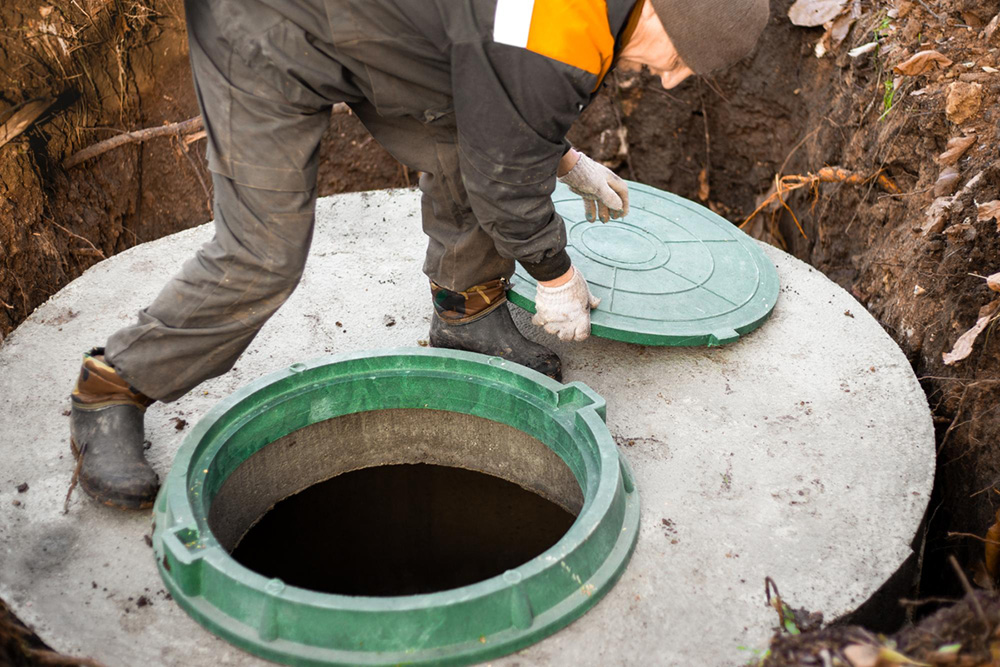Have you ever flushed the toilet and nothing goes down, worse, it even backs up? That sinking feeling indicates that sewer problems are occurring. Our homes are dependent on sewer lines, but we seldom care about them until a mishap occurs.
We are here to guide you through the six most common sewer problems, so you can identify them before they grow into an emergency.
1. Fat, Oil, and Grease Build-up (aka FOG)
A major culprit behind sewer line blockages is FOG, which stands for fats, oils, and grease. According to the EPA, between 23,000 and 75,000 sanitary sewer overflows (SSOs) occur in the United States annually. Grease is the leading cause of these overflows. That makes FOG a top offender in sewer problems nationwide.
To prevent the flow of FOG into the municipal sewer lines, many local communities have mandated the use of grease traps by restaurants.
2. Intruding Tree Roots
Roots go wild over moisture, and that places them firmly in the crosshairs of underground sewer pipes. The roots may find their way into the porous clay or the old-fashioned joints and form clogs.
Root intrusion can be a silent sewer threat in areas where fast-growing trees, such as willow and maple, are present.
Experts suggest that you do not plant them within 10 feet of your septic system or sewer line.
3. Leaks, Breaks & Rust
A section of sewer pipe can also sag due to soil shifting, erosion, or construction above it. These pipe “bellies” create low spots where debris, toilet paper, and grease gather and form sewer line blockages.
A homeowner shared in the Reddit community that there were sagging sewer pipes, and roots invading them, resulting in considerable amounts of standing sewage, all after a particularly damaging camera inspection.
4. Cracks, Corrosion, and Fractured Pipes
In the long run, sewer systems, particularly those made of cast iron or clay, may crack, corrode, or collapse. This damage not only disrupts the flow but also invites dirt, roots, and debris into the pipeline, increasing sewer problems.
Upgrading the old materials of the pipes to more modern types, such as PVC or HDPE, would help enhance your system with a new lease of life and help alleviate future risks.
5. Flushed Non-Flushable Items (so-called Fatbergs)
Fatbergs are rising in fame and infamy. They are gigantic clog makers made by any baby wipe (including those labelled as flushable) with FOG.
They have become urban legends as cities all over the world struggle to remove piles of concrete-like substance from their sewer systems. A 2017 study published in the Journal of Hydroinformatics states that fats, oils, and grease (FOG) deposits in sewer systems are responsible for approximately 25% of all annual line blockages in the United States.
6. Bad Installation or Misaligned Pipes
Sometimes sewer problems begin when pipes are installed improperly. Bleak slopes (insufficient grades to gravity flow), wrongly aligned joints, or loose connections are some of the common concerns that put the exit pipes in precarious positions, leading to leaks, blockage, and eventual collapse.
A Reddit user posted an account of what could be a combination of low-flow toilets and a lack of slope that led to recurring sewer backups, an example of how the installation failures interact with other everyday appliances.
Why Sewer Problems are Important, What You Can Do
- Combined sewer overflows (CSOs) release approximately 850 billion gallons of untreated sewage and stormwater annually, impacting water quality and public health.
- The U.S. Environmental Protection Agency (EPA), in a 2004 Report to Congress on CSOs and SSOs, estimated that combined sewer overflows (CSOs) and sanitary sewer overflows (SSOs) cause between 3,448 and 5,576 cases of gastrointestinal illness per year in the specific subset of monitored coastal and Great Lakes beaches.
Practical Prevention Tips
- Avoid pouring any grease into the drains; instead, dispose of it in the trash.
- Take care of what you put down the toilet, toilet paper and human waste only.
- Have the sewer line inspected or cleaned regularly, and consider it all the more important if you live in an older home or near trees.
- In some areas, municipalities advise conducting sewer inspections annually.
- Camera inspections will help you detect root problems or sagging pipes early.
- Do not plant large-rooted trees near sewer lines.
Sewage stinks, in every sense of the word. Whenever you hear gurgling drainpipes in your home, or life looks squishy when you step in the yard. Don’t wait, call a professional straight away.
Conclusion
Signs such as clogged drainage systems, bad smells, wet grass, and unusual sounds are SOS signals your plumbing system sends to you. Respond to them immediately. Sewer problems come in many forms, ranging from grease and root infiltration to installation errors. However, most of these headaches can be prevented with some reasonable preventive measures and proper checks.
Let Clatterbuck Home Inspections carry out an expert sewer scope on your behalf. We have been conducting home inspections for many years. We are a certified scope inspection company, providing comprehensive, digital reports and fast turnaround for sewer scope inspections.
Don’t let sewer line blockages cause chaos. Stay proactive. Contact Clatterbuck Home Inspections to have a professional sewer scope performed today. Our experienced staff provides fast, exhaustive, and credible reports that can be relied on. Prevent sewage catastrophes, secure your place, and save yourself from stress.
Schedule your inspection or get a quote and forget about sewer issues.

